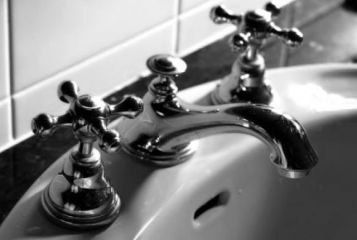Welcome! Here are the website rules, as well as some tips for using this forum.
Need to contact us? Visit https://heatinghelp.com/contact-us/.
Click here to Find a Contractor in your area.
If our community has helped you, please consider making a contribution to support this website. Thanks!
Domestic hot water recirculation systems
Options

HeatingHelp
Administrator Posts: 719
0
Comments
-
Nice article! There is mention of a diagram but I do not see an attachment. "Fortunately, the job isn't difficult. Begin by replacing that swing check with a spring check valve and install ball valves so that both the tank and recirc line can be individually flushed (see diagram)." Is a piping diagram available? Thank you!0
-
Hello, Here is the drawing that goes with it. That line on the left side is the tank. @Nickrnm , glad you liked it!

Yours, Larry0 -
-
Thank You!0
-
My small Grundfos ECM circulator won’t play nice with ball checks. It chatters horrifically. I had to remove them from my mixing valve so it’s effectiveness is limited. Eventually need to do a major re-pipe and install swing checks.
Also if you have multiple recirc branches each one needs a check as well or you get reverse flow there too where the recirc line from one fixture feed the adjacent fixture from its recirc line. It’s non issue If you have continuous recirc. Rather than a aquastat.0 -
Tell me more about these problematic check valves? Swing checks are not the best check for plumbing or hydronics. They need a pressure differential to close off properly, have long travel distance, and are usually a flat brass disc to brass seat, not bubble free.mikeg2015 said:My small Grundfos ECM circulator won’t play nice with ball checks. It chatters horrifically. I had to remove them from my mixing valve so it’s effectiveness is limited. Eventually need to do a major re-pipe and install swing checks.
Also if you have multiple recirc branches each one needs a check as well or you get reverse flow there too where the recirc line from one fixture feed the adjacent fixture from its recirc line. It’s non issue If you have continuous recirc. Rather than a aquastat.
A conical shape, soft seat, spring assist check is designed specifically for check protection in closed loop systems, both hydronic and potable water recirculation piping.
We use checks in many of our products, below are a few examples from 1/4"- 2" size. The springs are usually a .35- .50 psi "crack" so very low flow rates should open them fully. The spring is what closes the valve and makes the 100% bubble free seal, no pressure differential is needed. The mixing valves, balance valves, circulators, some ball valves all use a low spring "pop" spring check.
Spring checks have a very small travel distance to close compared to swing checks, so water hammer potential is much less.
Swing checks are best for sump pumps, ejector pumps, etc, where you have some pressure differential to close and seal them. They handle solids better also.
https://www.pmmag.com/articles/98049-installing-check-valves-in-a-recirculation-system
I'll check with Julius to see if he did a follow up article on check applications as he mentioned in the last sentence.
By far oversizing is the most common mistake. Check valves need to be sized by Cv not pipe size.
With gate type swing checks oversizing prevents the flow from completely opening the gate and noise and wear become a problem. The Cv is with the valve in full open position. variable speed circulators do not play well with swing checks.
Must be some other condition causing the problems you had with checks? Even the smallest of DHW circulators should develop sufficient flow, ∆P, to open a .35 psi check.Bob "hot rod" Rohr
trainer for Caleffi NA
Living the hydronic dream0 -
The ECM circ I used advised against spring checks. On mine it chattered.... really loud. Not sure if it’s just because it’s a constant torque motor and results in a resonance as the RPM changes. The chatter was probably the seat slamming shut rapidly.
Really, really wish now I had bought the Westinghouse indirect not the Weil McClain, which doesn’t have a dedicated recirc port. Although it might have still chattered anyway feeding through the mixing valve.0 -
Then check I showed above came out of an ECM circulator? Usually a check makes noise if something is stuck in it, you have a lot of air in the system, or inadequate flow to hold it open.
That small check in the pic came out of a thermostatic mixing valve that has a .50 Cv. Shouldn't take more than a breath to open and keep it open. Must be something else going on in that system.Bob "hot rod" Rohr
trainer for Caleffi NA
Living the hydronic dream0 -
When I built my 1st house, a 2 story the recirculator line worked well using gravity only. When I built my 2nd house, a ranch home, 1 story the gravity recirculation line would not work so I had to install a small pump.(probably too much horizontal and not enough vertical)0
Categories
- All Categories
- 87.4K THE MAIN WALL
- 3.3K A-C, Heat Pumps & Refrigeration
- 61 Biomass
- 430 Carbon Monoxide Awareness
- 121 Chimneys & Flues
- 2.1K Domestic Hot Water
- 5.8K Gas Heating
- 115 Geothermal
- 168 Indoor-Air Quality
- 3.8K Oil Heating
- 77 Pipe Deterioration
- 1K Plumbing
- 6.5K Radiant Heating
- 395 Solar
- 15.8K Strictly Steam
- 3.4K Thermostats and Controls
- 56 Water Quality
- 51 Industry Classes
- 50 Job Opportunities
- 18 Recall Announcements



